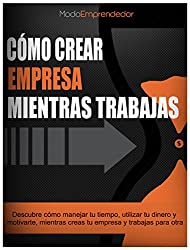
In the following article you will find 5 strategies to learn how to read faster what you currently read. A skill that will speed up your learning and make you enjoy reading more.
A little over two years ago, I wrote an article expressing my love for reading and what strategies I used to read at least one book a month. Find the item by click here.
This article had very good comments and I realized that despite the bad reputation of Latin American countries, for reading little or nothing; We are aware of the importance of reading and its benefits.
Additionally, I was curious that many of the readers commented that, like me, they were also slow readers. Reason why they felt unmotivated on some occasions.
For this reason, it occurred to me to share with you some techniques on how to read faster.
Strategies that I have been using to increase my reading rate, which has allowed me to finish books without a problem in a week.
5 strategies to learn how to read faster.
1. If you want to know how to read faster you must first believe that you can do it.
Perhaps for some this is foolish advice. However, it is necessary to break our own mental barriers. Many people simply don’t start because they firmly believe they can’t do it. Big mistake!
The problem is that the media shows us that people like Bill Gates read more than 50 books a year.
Since Gates is one of the richest men in the world, our brain immediately tells us: “I’m not Bill Gates, I’m not the richest man, he can and I can’t.”
I have been doing it and believe me, there is nothing in me that makes me better than you. I even considered myself lazy to read. In fact, I’m going to confess that sometimes I am. It’s not every week that I read a book.
Why? Because like you, sorry for my vocabulary, “I don’t feel like reading” and I don’t. Other times I have a very busy week and only read the days I can. That doesn’t make me a bad reader, it just makes me a human being.
I’m telling you this because I know you’re probably going to feel identified. So don’t be discouraged. You may not read 52 books, but what if you read 30?
If today you don’t read anything and after a year you read 15. It would be a great advance, don’t you think?
You can do it.
if you want to learn how to read faster, you must believe that you can too. The only thing that is special about those good readers is only their will and their self-confidence.
2. Read the introduction, conclusion, and table of contents.
Are you one of those who skips the introduction? Relax, I did it too.
However, if you want to train yourself in the art of how to read faster, it is important that you read the introduction and then the conclusion. Why?
In the introduction the author will explain his thesis. That is, he is going to tell you what the book is going to be about and what he wants to explain. On the other hand, in the conclusion he will tell you what was the result of his research analysis.
Likewise, each subheading of the table of contents will tell you in detail what you are going to face. And even better, it will give you a first idea of whether the book is what you expect.
This information will give you a broader vision of the text and will make it easier for you to read the book faster, if you apply the following technique…
3. Don’t read word for word.
Before explaining why you shouldn’t read word for word, it is necessary to clarify that this strategy can only be applied to non-fiction or nonfiction literature.
Peter Bregman explained in an article for the Harvard Business Review that fiction books require full understanding to envelop the reader in their world. Every detail is important to follow the thread of the story.
By contrast, nonfiction books should not be read; they must be understood.
I will explain this further. Over time you will realize that a nonfiction book is made up of a main idea, supporting ideas that support the main idea, and examples.
Not everything is strictly important.
Know something? Most of the books are examples. In fact, I would go so far as to say that 70% of nonfiction books are made up of examples. Do you need to read 3, 4 or 5 examples to understand an idea? I think not.
Additionally, an author repeats the same ideas several times throughout the text with the intention of imprinting them in the reader’s mind and facilitating their understanding throughout the reading.
I recently wrote an article titled “52 teachings from the book How to win friends and influence people” by Dale Carnegie. As the headline says, from my point of view I took the 52 most important ideas from the book. The rest of the text were examples.
I assure you that if you read the article you will be able to understand very well what the book is about without having to read it. In fact, you could brag about having read it.
I must clarify that the examples make the book more fun and interesting, but only one example is enough to understand what the author wants to express.
In this way, a text of hundreds of pages is reduced to a few accounts, without losing its structure and main content.
4. Scan the chapters.
This strategy is clearly an extension of the previous one and in fact it was one of the techniques that I proposed in the article. “How to have the self-discipline to read at least one book a month.”
You don’t have to read everything verbatim. That doesn’t make you a bad reader, it’s just a way to speed up your reading speed.
If you’ve already seen the table of contents, introduction, and conclusion, you already have a general idea of what the book is about.
So look for the main ideas that the author proposes. Then read an example or two, if you need to. That’s enough to understand what the author meant. Keep moving forward.
Additionally, regardless of whether you are reading a Best Seller, it is very possible that you will come across some parts of the book that do not seem interesting to you.
Make sure they are not a main piece to understand what is coming. If they aren’t, don’t feel bad about skipping them. So you will not lose motivation and continue reading.
5. Take notes.
It is logical that you think that taking notes will cause you to spend more time reading. The time you write you could use reading.
However, there are times when I need to remember something I read on previous pages and I waste time searching. Then I think “I should have written that idea down.”
take small notes, something that helps you remember quickly. In fact, just by writing you are increasing your chances of remembering later.
If you have a very good memory and don’t need to do this, congratulations. You don’t need to take notes and you will be able to read even faster than I can. However, I find them very helpful and recommend doing so.
Conclusion.
Apart from increasing your reading speed, one of the great advantages of using these techniques is that by not loading your memory with so many examples, you are enabling your brain to store more information. With this, plus some annotations, you will be able to retain more of what you read.
On the other hand, scanning the chapters and looking for main ideas will allow you to have a more direct contact with the book; not to mention that your brain will be much more active.
These techniques will give you a different approach and you won’t be reading just to read.
We hope this article has been very useful for you and if you have any contribution that you want to make from your experience, do not hesitate to leave it in the comments 🙂
And remember, if you are really interested in creating your own business, you can read our book “How to create a company while working: Discover how to manage your time, manage your money and motivate yourself while creating a company and working for another” , where you will find all the information you need to found your own company, without having to leave your job.


